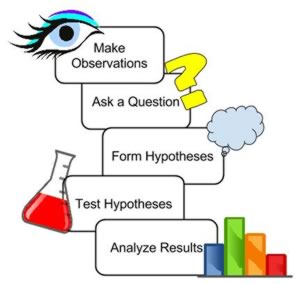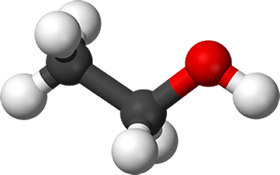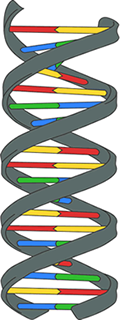AP Biology Unit 1
Essential Questions: Chapter 1.1
1. How does scientific inquiry answer questions about the living world?
2. How do observations lead to scientific inferences?
3. How do scientific processes lead to a greater understanding of the natural world?
4. How can data be analyzed to determine the outcome of an experiment or set of observations?
5. How do scientists share information and build upon the work of others?
Essential Questions: Chapter 1.2
1. What properties are found in all living things?
2. How do scientists know when something is a living organism?
3. How are living things classified?
4. How do living things maintain homeostasis and why is that important?

Learning Objectives: Chapter 1.1 (The Science of Biology)
Design and/or evaluate a scientific investigation using evidence of scientific thinking and/or problem solving. ("What Not to Serve Buzzards")
Summarize the steps of the scientific method.
Interpret and analyze data to make predictions and/or defend conclusions; graph data according to scientific conventions
Identify the dependent and independent variables in an experiment. (DRY MIX)
Evaluate data by calculating standard deviation, mean, and median.
Make specific statements that demonstrate inductive/deductive reasoning; explain how this type of reasoning is used in science.
Discuss the limitations of scientific processes. (falsifibiability, natural causation, proving negatives, confirmation bias, correlation/causation)
Explain the importance of peer review and publication.
Explain how theories are used in science, contrast to how laws are used.
Compare and contrast the structure and function of a compound microscope, stereomicroscope, SEM, and TEM.
Demonstrate proper use of a compound microscope in order to make observations and estimate size.
Learning Objectives: Chapter 1.2 (Themes and Concepts of Biology)
Define and provide examples of each level of organization; define emergent properties.
Describe the properties of life.
Examine a set of observations about nanobacteria and make a determination regarding whether nanobacteria should be considering a living organism. (Case Study)
Establish a relationship between energy , regulation, and homeostasis.
Appreciate the diversity of life, providing examples of organisms found in each of the 3 domains
Describe how organisms are grouped and named used modern classification systems (taxonomy).
Chapter 2: The Chemical Foundation of Life
Describe the difference between ions and atoms and explain the important of ions in biological processes.
Compare the types of bonding between atoms to form molecules.
Identify subatomic particles and describe how they are arranged in atoms; be able to use a periodic table.
Define isotope and provide examples of how isotopes are used in medicine and other branches of science.
Explain how the properties of water make water essential for life on Earth.
- polarity
- heat capacity
- heat of vaporization
- solvent (dissociation)
- cohesion / adhesion
Compare an acid to a base, paying close attention to how hydrogen ions play a role in these types of compounds.
Explain the difference between organic and inorganic compounds.
Define isomer and provide examples of structural isomers (glucose & fructose)
Describe the properties of the carbon atom that make the diversity of carbon compounds possible.
Identify functional groups of organic compounds and provide examples.
- hydroxyl
- carbonyl (ketones & aldehydes)
- carboxyl
- amino
Discuss how the chemical structure of alcohols influence the effect on living systems (Article: Wood Alcohol Poisonings)
Essential Questions: Chapter 2
1. What are ions and how are they important in biological processes?
2. How do the properties of what make it able to sustain life?
3. How does the molecular structure of a compound influence its function?
4. How do molecules form the building blocks for living systems?

Chapter 3: Biological Macromolecules
Compare hydrolysis to dehydration synthesis with regard to how macromolecules are formed and broken down.
Identify and/or describe the basic molecular structure of:
- carbohydrates
- lipids
- proteins
- nucleic acids
Describe structure and provide examples of:
- monosaccharides, disaccharides, polysaccharides, pentose sugars
- fatty acids, triglycerides, saturated & unsaturated fats
- lipids and phospholipids
- steroids
- proteins and amino acids (polypeptides)
- nucleic acids (DNA, RNA)
Explain how the folding of proteins into their different shapes affects their overall function
Essential Questions: Chapter 3
1. How do atoms form bonds to create molecules and macromolecules?
2. What is the basic structure of the four macromolecules found in living systems?
3. How do each of the four types of organic macromolecules function in living systems?
4. How are carbohydrates used in plants and animals as energy storage molecules?
5. How does the structure of DNA enable it to be an information storing molecule?

Next Generation Science Standards
HS-LS1-2 Develop and use a model to illustrate the hierarchical organization of interacting systems that provide specific functions within multicellular organisms
HS-LS1-6 Construct and revise an explanation based on evidence for how carbon, hydrogen, and oxygen from sugar molecules may combine with other elements to form amino acids and/or other large carbon-based molecules.
HS-LS1-7 Use a model to illustrate that cellular respiration is a chemical process whereby the bonds of food molecules and oxygen molecules are broken and the bonds in new compounds are formed resulting in a net transfer of energy.
Science Practices
1. Asking questions (for science) and defining problems (for engineering)
2. Developing and using models
3. Planning and carrying out investigations
4. Analyzing and interpreting data
5. Using mathematics and computational thinking
6. Constructing explanations (for science) and designing solutions (for engineering)
7. Engaging in argument from evidence
8. Obtaining, evaluating, and communicating information